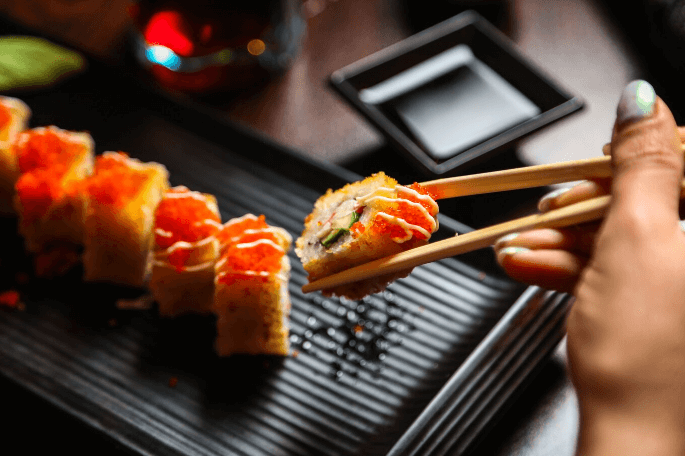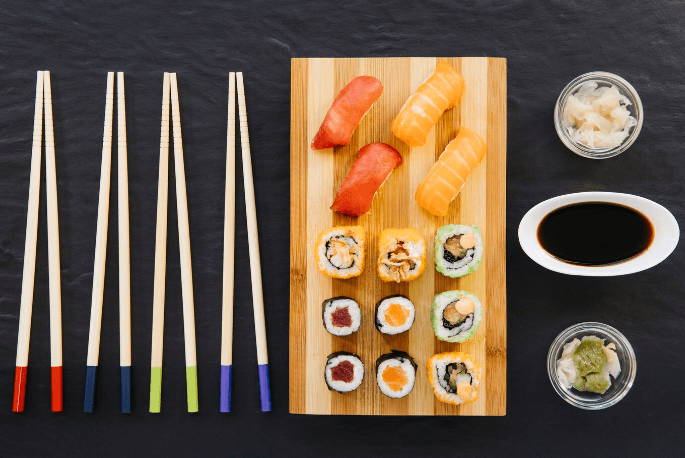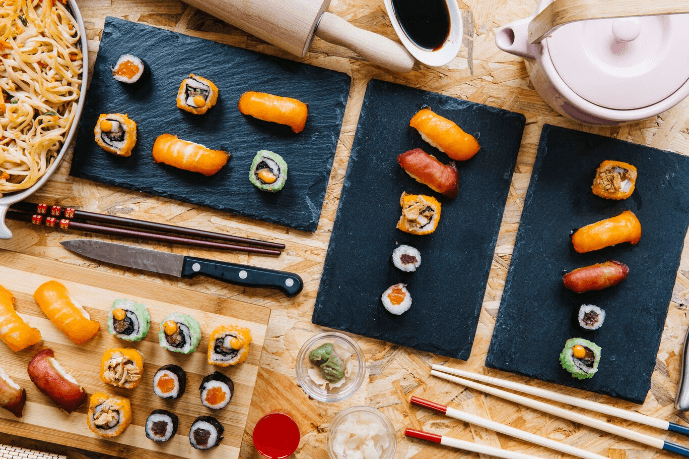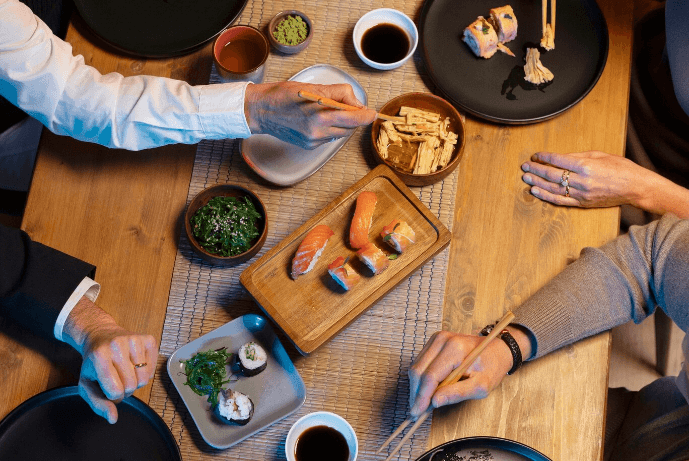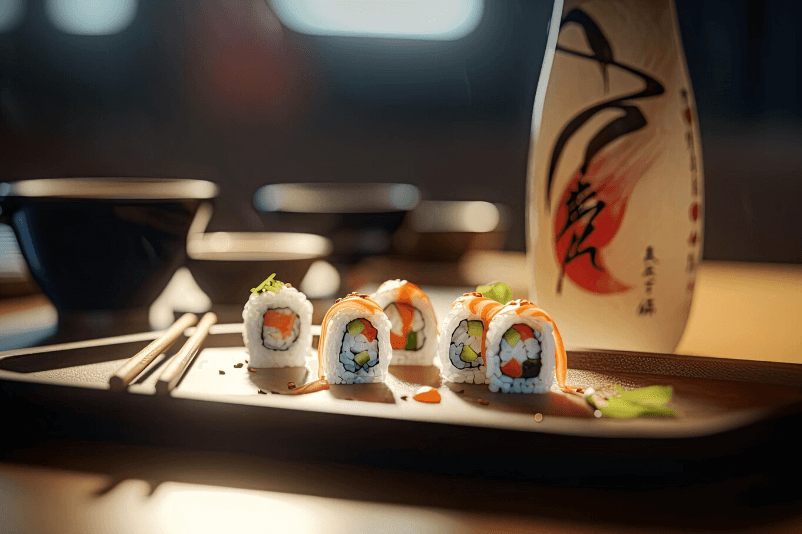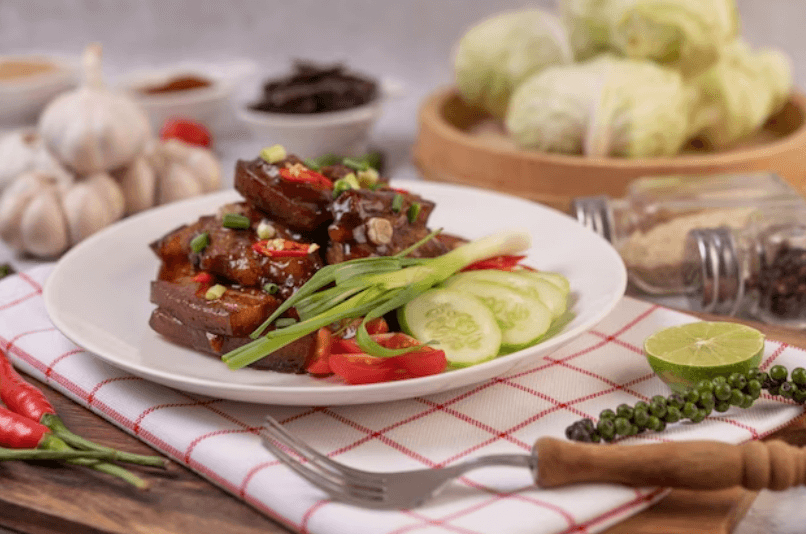Is Teppanyaki Cooking the Same as Hibachi
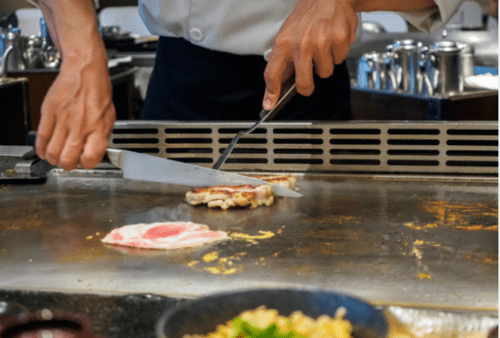
Are you a fan of Japanese cuisine and wondering what the differences are between teppanyaki and hibachi cooking? Perhaps you’ve heard these terms before but aren’t sure how they differ from each other. Well, look no further! In this blog post, we’ll explore the origins, techniques, ingredients, and presentation styles of both teppanyaki and hibachi cooking. Discover why these culinary styles have become so popular around the world and where to experience them for yourself. Get ready to tantalize your taste buds with some mouth-watering dishes that will transport you straight to Japan!
Brief overview of teppanyaki and hibachi cooking styles, setting the context for the comparison
When it comes to Japanese cuisine, teppanyaki and hibachi cooking styles are two of the most popular methods that come to mind. Teppanyaki is a style of cooking where food is cooked on an iron griddle while Hibachi involves grilling over a charcoal fire.
Teppanyaki often includes meat such as steak or chicken, along with vegetables like mushrooms and onions. The chef will typically perform impressive knife skills while preparing the meal and cook everything in front of the diners for added entertainment value.
Hibachi-style meals are usually made up of grilled meats, seafood, or vegetables. The term “hibachi” originally referred to portable heating devices used for warmth during winter months but has since evolved into referring to this style of cooking.
Both styles offer unique experiences for diners with their own set of techniques, ingredients and presentation styles. While they may seem similar at first glance due to both involving high heat cooking over an open flame source, there are key differences between them that make each one stand out in their own right.
Whether you prefer teppanyaki or hibachi-style dishes really comes down to personal preference when it comes to texture and taste preferences. Regardless of which one you choose though, both offer delicious flavors alongside entertaining culinary performances making them memorable dining experiences worth trying at least once in your lifetime!
The Origins of Teppanyaki and Hibachi Cooking
Teppanyaki and hibachi cooking styles are both rooted in Japanese cuisine, but they have distinct origins. Teppanyaki cooking can be traced back to the 1940s, when it was first introduced in Tokyo as a way of showcasing premium cuts of beef. The name “teppanyaki” translates to “grilling on an iron plate,” which accurately describes the technique used.
Hibachi cooking, on the other hand, has a longer history dating back to the Heian period (794-1185) in Japan. Originally used for heating homes and cooking food over an open flame, hibachis were eventually adapted for use by chefs in restaurants.
It wasn’t until after World War II that teppanyaki and hibachi became popular outside of Japan. In fact, teppanyaki was first introduced to America by Japanese immigrants who opened restaurants specifically featuring this style of cooking.
Today, both teppanyaki and hibachi continue to evolve with new ingredients and presentation techniques while still staying true to their traditional roots. Whether you prefer one over the other or enjoy them equally, there’s no denying that these two styles of Japanese cuisine remain beloved around the world.
Aspect Teppanyaki Hibachi
| Cooking Surface | Flat iron griddle provides even heat distribution | Charcoal grill creates more intense, smoky flavors |
| Heat Control | Easier to control heat due to electric or gas griddle | Less precise heat control with charcoal |
| Cooking Technique | Fast, high heat cooking seals in flavors and nutrients | Slower, more traditional grilling process |
| Ingredients | Wide variety, including meats, seafood, and vegetables | More focused on meats and vegetables |
| Presentation | Theatrical, with chefs performing cooking tricks | More intimate, casual dining experience |
| Dining Atmosphere | Social, interactive, and entertaining | Cozy, traditional, and authentic |
| Space Requirements | Requires large, open kitchen space for performance | Smaller, more compact setup possible |
| Cost | Can be more expensive due to equipment and ingredients | Often more affordable due to simpler setup |
| Cultural Authenticity | Modern, fusion approach to Japanese cuisine | Rooted in traditional Japanese cooking techniques |
| Skill Level | Requires skilled chefs for performance and precision | Less reliant on showmanship, focuses on cooking skill |
Teppanyaki Cooking: Technique, Ingredients, and Presentation
Teppanyaki cooking is a Japanese culinary style that involves cooking food on a flat iron griddle. The word “teppan” translates to “iron plate,” while “yaki” means “grilled.” Teppanyaki chefs are known for their impressive knife skills and theatrical presentation, making dining at a teppanyaki restaurant an unforgettable experience.
The key technique used in teppanyaki cooking is the use of high heat to quickly sear the ingredients. This ensures that the food retains its natural flavors and juices while developing a delicious crust on the outside. To achieve this, chefs often use oil with a high smoke point such as vegetable or canola oil.
Teppanyaki cuisine typically features fresh seafood like shrimp, scallops, and lobster along with meats like steak, chicken, and pork. Vegetables such as onions, mushrooms, zucchini, and carrots are also commonly used in teppanyaki dishes.
In terms of presentation, teppanyaki chefs add flair by performing tricks such as tossing shrimps into their hats or creating onion volcanoes that spout flames. The attractive display adds to the overall experience of dining at a teppanyaki restaurant.
Teppanyaki cooking is all about precision and speed combined with theatrics to create dishes that not only taste amazing but are visually stunning too!
Description of the teppanyaki cooking process, including the use of a flat iron griddle, the types of ingredients commonly used, and the theatrical presentation style
Teppanyaki cooking is a popular Japanese cuisine that involves the use of a flat iron griddle to cook various ingredients. The teppanyaki grill is central to this technique, as it allows for even heat distribution and quick cooking times.
The types of ingredients used in teppanyaki cooking vary depending on the restaurant or chef’s preferences, but commonly include beef, chicken, seafood, vegetables like mushrooms and onions, and rice. These are typically prepared with sauces such as teriyaki or soy sauce and served alongside other traditional sides like miso soup or edamame.
One unique aspect of teppanyaki cooking is its theatrical presentation style. Chefs often perform impressive knife skills while preparing dishes right in front of diners’ eyes. They may also make use of props like eggs or shrimp tails to create fun entertainment during the meal.
The combination of fresh ingredients cooked on an intense heat source with skilled showmanship makes for an unforgettable dining experience at any reputable teppanyaki restaurant.
Hibachi Cooking: Technique, Ingredients, and Presentation
Hibachi cooking is a traditional Japanese cooking style that has been around for centuries. It involves grilling meat, seafood, and vegetables over an open flame on a flat iron griddle.
The technique of hibachi cooking requires precision and skill to ensure the ingredients are cooked perfectly. The chef must control the heat of the grill by adjusting the distance between the food and flames, as well as flipping each ingredient at just the right time to prevent burning or undercooking.
As for ingredients used in hibachi cooking, it typically includes steak, chicken, shrimp, scallops, onions, mushrooms, zucchini and other veggies – all seasoned with soy sauce or teriyaki sauce.
Presentation is also important in Hibachi-style cuisine. Chefs often perform juggling tricks with their knives while slicing up meats and vegetables to add some fun entertainment factor during meal preparation.
Overall,having a meal cooked using this method can be quite entertaining since diners get to see their meals cooked right before them on a large hot plate while being entertained by skilled chefs.
Key Differences Between Teppanyaki and Hibachi Cooking
While teppanyaki and hibachi cooking are often confused with one another, there are a few key differences between these two styles of Japanese cuisine. First off, the equipment used for each style is different: Teppanyaki cooking typically involves using a large, flat iron griddle while Hibachi cooking traditionally requires an open-top charcoal grill.
Another difference lies in the type of ingredients commonly used. While both styles use fresh meats and vegetables, teppanyaki tends to feature more seafood options like shrimp and scallops, while hibachi dishes usually include heartier proteins like steak or chicken.
The preparation techniques also differ between the two styles. In teppanyaki cooking, chefs often slice ingredients into small pieces before quickly searing them on the hot griddle in front of diners. Meanwhile, hibachi chefs focus on marinating their proteins beforehand to infuse flavor before grilling them over high heat.
Presentation style is another major differentiator between teppanyaki and hibachi dishes. Teppanyaki chefs often incorporate flashy tricks into their performances – such as tossing food into diners’ mouths – whereas Hibachi-style dining emphasizes communal eating around a shared grill.
Popular Teppanyaki and Hibachi Dishes
Teppanyaki and Hibachi cooking both offer a wide range of delicious dishes that are popular among Japanese cuisine lovers. Teppanyaki-style cuisine typically focuses on the use of high-quality meats, seafood, and vegetables that are cooked to perfection on a hot iron griddle.
One of the most popular teppanyaki dishes is steak, which is often prepared with soy sauce or garlic butter to enhance its flavor. Other common teppanyaki dishes include chicken teriyaki, shrimp tempura, lobster tail, scallops, and fried rice.
On the other hand, hibachi-style cooking incorporates more grilled meats such as beef tenderloin and short ribs alongside fresh veggies like zucchini and onions. The signature dish served in hibachi restaurants worldwide is likely the classic “hibachi dinner,” consisting of meat (usually steak or chicken), soup, salad, vegetables (such as carrots or broccoli), fried rice pilaf topped off with a tangy mustard dipping sauce.
In addition to these staples at each respective style’s restaurant scene; there has been an ever-increasing demand for fusion items like sushi rolls stuffed with grilled meat or hibachi-inspired noodle bowls loaded with veggies & proteins cooked over open flames – all delivering exciting new flavors!
Where to Experience Teppanyaki and Hibachi Cuisine
If you’re looking to experience the thrill of teppanyaki or hibachi cooking, there are a few places you can go to satisfy your craving for Japanese cuisine.
In Japan, teppanyaki and hibachi-style restaurants are abundant. Some popular chains include Benihana, Matsusakagyu Yakiniku M, and Seryna. These restaurants offer a variety of dishes cooked right in front of you on a hot iron griddle or grill.
Outside Japan, many cities have dedicated teppanyaki and hibachi restaurants where diners can watch their food being prepared while enjoying the theatrical display put on by the chefs. In New York City alone, there are dozens of options such as Gyu-Kaku Japanese BBQ, Kobe Steakhouse & Lounge, and Daruma-Ya.
For those who prefer to cook at home but still want to try out these styles of cooking, there are tabletop grills available that mimic the experience. You can find them online or at specialty kitchen stores.
No matter where you choose to dine or cook yourself up some delicious Japanese-inspired dishes using these techniques – one thing is certain: You won’t be disappointed!
Recommendations for finding and enjoying teppanyaki and hibachi-style restaurants, both in Japan and abroad
If you’re looking to experience teppanyaki and hibachi-style cuisine, there are plenty of options both in Japan and abroad. To start your search, try asking locals or checking online reviews for recommendations.
In Japan, teppanyaki restaurants can often be found in upscale hotels or shopping centers. Look for places with a chef’s counter where you can watch the cooking process up close. For hibachi-style dining, look for traditional izakaya bars that offer grilled skewers alongside other dishes.
Outside of Japan, many Japanese restaurants around the world offer a teppanyaki option on their menu. These may not always have the same theatrical presentation as a dedicated teppanyaki restaurant but can still provide a delicious meal cooked right in front of you.
To truly enjoy the experience, be open to trying new things and engaging with your chef. Don’t be afraid to ask questions about ingredients or techniques used in the cooking process.
Finding and enjoying teppanyaki and hibachi-style cuisine is all about immersing yourself in Japanese culture while enjoying delicious food prepared by skilled chefs.
Conclusion
After exploring the similarities and differences between teppanyaki and hibachi cooking, it’s clear that both styles offer a unique and flavorful dining experience. Teppanyaki is known for its theatrical presentation, use of high-quality ingredients, and emphasis on individualized dishes. On the other hand, hibachi offers a more casual atmosphere with communal seating arrangements and an emphasis on grilled meats, seafood, and vegetables.
No matter which style you prefer, Japanese cuisine has something to offer for everyone’s palate. Both teppanyaki and hibachi have become popular around the world due to their delicious flavors and memorable dining experiences.
If you’re looking to try either style of cooking or simply want to indulge in some authentic Japanese cuisine, be sure to explore local restaurants in your area or plan a trip to Japan for an unforgettable culinary adventure.
FAQs
What is the difference between hibachi and teppanyaki?
The primary difference between hibachi and teppanyaki lies in the cooking surface and technique. Hibachi uses a traditional charcoal grill for cooking, while teppanyaki utilizes a flat iron griddle. Teppanyaki typically involves high heat and fast cooking, whereas hibachi features a slower, more traditional grilling process. The dining experience also differs, with teppanyaki focusing on a theatrical, interactive performance by the chef, while hibachi offers a cozier, more intimate atmosphere.
What is the difference between a hibachi chef and a teppanyaki chef?
A hibachi chef specializes in cooking on a traditional charcoal grill and is more focused on the authentic preparation of the ingredients. A teppanyaki chef, on the other hand, is skilled in cooking on a flat iron griddle and often incorporates theatrical elements and showmanship in their cooking, such as flipping utensils, tossing food, and creating flames.
What is hibachi or teppanyaki style cooking?
Hibachi and teppanyaki are two distinct styles of Japanese cooking. Hibachi style cooking involves using a traditional charcoal grill to prepare ingredients, with an emphasis on traditional grilling techniques. Teppanyaki style cooking utilizes a flat iron griddle and high heat to quickly cook ingredients, often accompanied by a theatrical, interactive performance by the chef.
What makes hibachi different?
Hibachi is different from other cooking styles due to its use of a traditional charcoal grill, which imparts a unique, smoky flavor to the ingredients. Hibachi also emphasizes a more intimate, casual dining experience, as opposed to the theatrical, performance-oriented nature of teppanyaki.
What is Japanese style cooking teppanyaki?
Japanese style cooking teppanyaki is a modern, fusion approach to Japanese cuisine that involves cooking on a flat iron griddle at high temperatures. It is known for its theatrical, interactive presentation, where skilled chefs perform various tricks and engage with diners as they cook.
What is the difference between grilling and teppanyaki?
The main difference between grilling and teppanyaki lies in the cooking surface and technique. Grilling typically involves cooking food on an open flame, such as a charcoal or gas grill, and imparts a smoky flavor to the ingredients. Teppanyaki, on the other hand, uses a flat iron griddle to cook food at high temperatures, resulting in a different flavor profile and texture. Additionally, teppanyaki often incorporates a theatrical, interactive performance by the chef, while grilling is generally more focused on the cooking process itself.
